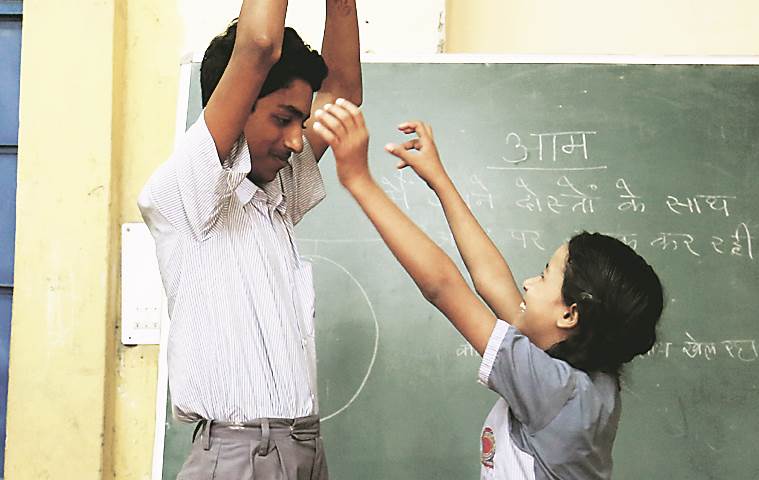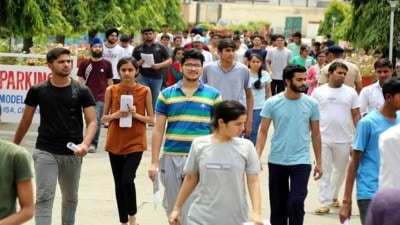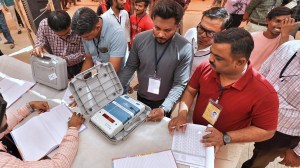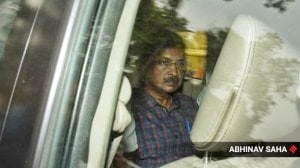- India
- International
Kids who couldn’t read catch up — one letter at a time
The government’s assessment done in August shows that barely half of Class VI students could read a simple story from a Class II book.
 Student of Class VII at Sarvodaya Vidyalaya in Masjid Moth. (Express Photo by Amit Mehra)
Student of Class VII at Sarvodaya Vidyalaya in Masjid Moth. (Express Photo by Amit Mehra)
Standing and staring at the blackboard for a couple of seconds, Devki suddenly screams out the word “chutney”. “What is chutney?” asks the teacher. “What you eat with samosa,” shout out the 17 students sitting in the class.
After the grand feat, the Class VII student happily takes her seat, satisfied that the task, which would have been impossible for her two months ago, but is not so difficult anymore.
Reading basic words is what you would expect every child in her class to do, but for the “non-readers” in some government schools, it was an uphill task.
For them, the past two months have been a life-changing experience. Many can now read words, paragraphs, and even stories.
Devki and 16 other students of Class VII at the Sarvodaya Vidyalaya in Masjid Moth were put under the non-readers category after an assessment done by the government in August, as part of its Chunauti 2018 policy. They were not able to read sentences and paragraphs, and some even had a hard time recognising letters.

The teacher for the group of Class VII students writes down 16 words on the blackboard, and asks each student to locate a word she chooses for each of them on the board. This serves a dual purpose, the teacher says. “The children learn to recognise letters, words, and numbers.”
“The individual attention that students get and the confidence they develop is the biggest improvement. With a little extra attention, most were able to start reading,” says Ravinder Kaur, a mentor teacher who monitors the progress of non-readers in five schools.
In the workshop for Class VIII, students were given a set of simple stories and asked to read along with the teacher. Some were asked to read out passages individually and then enact it to show that they have understood what they read.
The government’s assessment done in August shows that barely half of Class VI students could read a simple story from a Class II book.
The government divided children from classes VI, VII and VII into readers and non-readers based on this assessment. Soon after, the government schools planned to set aside one hour every day for helping out the second group.
With the no-detention policy in place, which mandates that no student can be asked to repeat a class till she/he reaches Class VIII, this move comes as a major help for those students who keep passing even if they can’t write their names.
The students too cannot be blamed: overcrowded classrooms — some classes in Delhi government schools have up to 100 students — mean teachers cannot afford to give every student individual attention. When teachers rush to complete the prescribed syllabus, many can’t keep up.
But at these workshops, each student gets individual attention since the class size is small, the teachers say.
There is nothing radical in the teaching methods but the attention and time each student gets is of major help.
“Teacher participation is crucial to this programme and the idea also came from them. Most are putting in the effort to teach children the basic language skills. Yes, there is a shortage of teachers, but for the first time in their lives, these children have got the attention that they need,” says Atishi Marlena, advisor to Education Minister Manish Sisodia.
However, making all children a “reader” by November 14 — the deadline the government has set — is near impossible.
“Not all students will learn to read by the deadline. Many of them have learning disabilities. Some were diagnosed
once they were divided into the non-reader group and teachers spent more time with them,” said an education department official.
Apr 18: Latest News
- 01
- 02
- 03
- 04
- 05






































